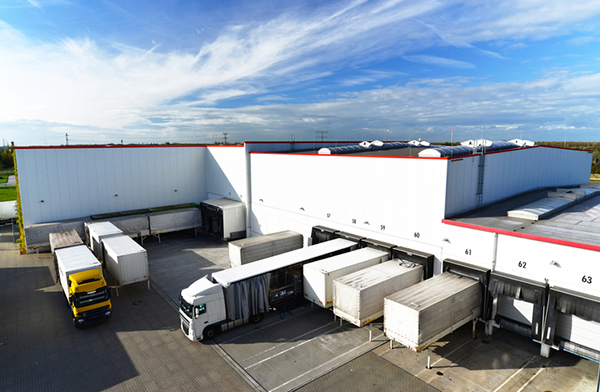E-commerce and logistics companies claimed a larger share of the 100 largest industrial-and-logistics leases signed in 2018 than they did a year earlier, underscoring the growing influence of those companies on U.S. warehouse construction, according to a new report from CBRE.
CBRE's analysis of last year's industrial-leasing activity in the U.S. found that 61 of the largest 100 leases were signed by e-commerce companies and logistics firms for a total of 61.5 million sq. ft. In the previous year, those two sectors claimed 52 of the largest leases for a cumulative 43.2 million sq. ft.
The two are related in that many logistics companies, specifically third-party logistics providers, handle e-commerce distribution for their clients.
“These figures show there still is a lot of momentum behind e-commerce uses in U.S. warehouse leasing, despite concerns that the sector's expansion may be reaching its later stages,” said David Egan, CBRE's Global Head of Industrial & Logistics Research. “We expect this type of leasing momentum to continue in 2019.”
Regardless of industry, the largest industrial leases got even larger last year. The largest 100 from last year – spanning uses such as e-commerce, logistics, manufacturing, food and beverage, technology and retailing – totaled 19 percent more space than the largest of 2017.
Last year's largest industrial leases were spread across 32 markets, with many clustering in leading logistics hubs including California's Inland Empire (20 leases), Pennsylvania's I-78/I-81 corridor (11), Dallas-Fort Worth (10), Atlanta (nine) and Chicago (five). Others claiming several large leases were Columbus (four), Detroit (four) and St. Louis (three).
“These are among the leading markets that offer the high-quality logistics facilities that many of these e-commerce users are seeking,” said Chris Zubel, CBRE Americas Industrial & Logistics Investor Leader. “This activity builds upon itself when a region provides the transportation access, qualified labor pool and state-of-the-art real estate that many e-commerce users need.”
Matt Walaszek, CBRE Senior Research Analyst in Industrial & Logistics told SCMR in an interview that researchers weren't too surprised with the findings, as they aligned with what they’d been seeing with regard to strong e-commerce growth and high demand for logistics space.
“We were interested to discover that 40% of the 3PL occupiers were serving e-commerce customers, reinforcing our view that online retail continues to evolve and impact demand for logistics space,” he said. “In total, the cumulative square footage of the top 100 deals grew by 19% Y-o-Y, especially with regard to e-commerce users which rose 42% (in square footage) during the same timeframe.”
Of the top 100 deals 33 deals took place on the West Coast States (CO, CA, AZ, UT, NV, OR, WA), added Walaszek.
“Of those 33 deals on the West Coast only 6 were renewals, while the remaining were new deals and user sales,” he said. “West Coast markets will continue to generate huge demand. However, lack of supply is hampering leasing activity as there is simply not a lot of available space for occupiers looking to expand their footprint.”
SC
MR


Latest Supply Chain News
Latest Resources

 Explore
Explore
Business Management News
- Unlocking retention: The role employee engagement plays
- Can supply chain managers embrace an entrepreneurial mindset?
- Challenges to ESG reporting
- With capacity to spare, logistics real estate demand remains subdued
- How to improve demand forecasts for new product families
- Services sector sees growth in October, reports ISM
- More Business Management
Latest Business Management Resources

Subscribe

Supply Chain Management Review delivers the best industry content.

Editors’ Picks





